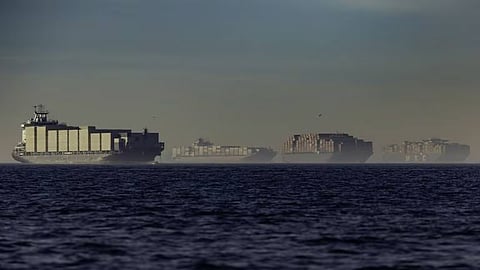Round Africa Again?
This week saw a sharp escalation of the security situation in the Bab-al-Mandeb strait off the coast of Yemen.
Multiple vessels have now been attacked off the Yemeni coast by the Houthis resulting several major shipping lines placing their vessels on hold to not pass the Red Sea, rendering the Suez routing unavailable for an unknown period.
While the impact of this will be on multiple trades, particularly troublesome is on the Far East to North America East Coast (NAEC) trade, as there has been a shift towards the Suez routing due to the drought in the Panama Canal, making a reversal to the Panama routing impossible.
For the Africa routing, the increase in sailing times will be quite substantial, especially for services to the Mediterranean (MED).
Using a standard speed of 17 knots during the deviation, one is looking at a likely increase in transit time of roughly 9 days on Far East-North Europe, 14 days to MED, and 5 days to NAEC.
For a full roundtrip however, additional vessels will need to be injected into services on these trades to maintain a weekly departure.
Using the number of services on the impacted trades, the average vessel size on each service, and an additional vessel for every 7-day increase in sailing time, it is possible to calculate how many additional vessels are needed on each trade.
What this also allows us to do is to calculate the total additional nominal capacity that is needed to cater for sustained round-Africa services. This is shown below:
With these assumptions, a switch to round-Africa would require 1.45-1.7 Million TEU of vessel capacity. This equals between 5.1%-6.0% of the total global container vessel capacity.
Part of the current overcapacity problem has been absorbed by slow-steaming, and while this additional capacity can also be absorbed – only just – it would require vessels to sail faster.
Read More: Houthi Rebel Missile Attacks Threaten a Global Supply Chain Crisis at Suez Canal


